Product Consultation
Your email address will not be published. Required fields are marked *
Content
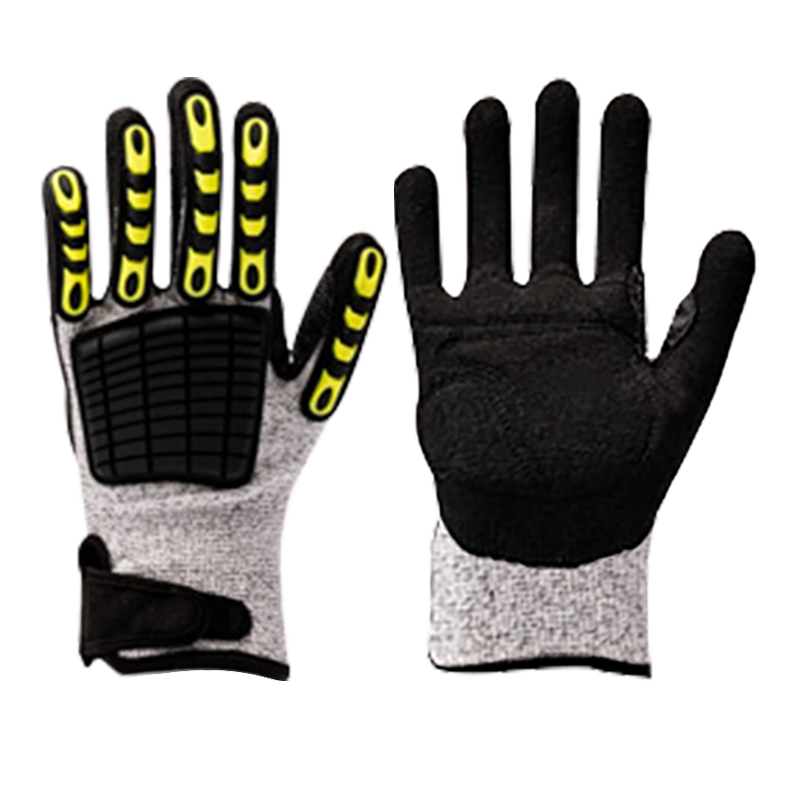
TPR Gloves, or Thermoplastic Rubber Gloves, are a type of protective glove designed to offer enhanced hand protection, durability, and comfort. These gloves are widely used in industrial, construction, automotive, and mechanical fields due to their versatility and protective properties. TPR is a type of polymer that is molded into a form-fitting glove, offering a balance of flexibility, durability, and comfort .
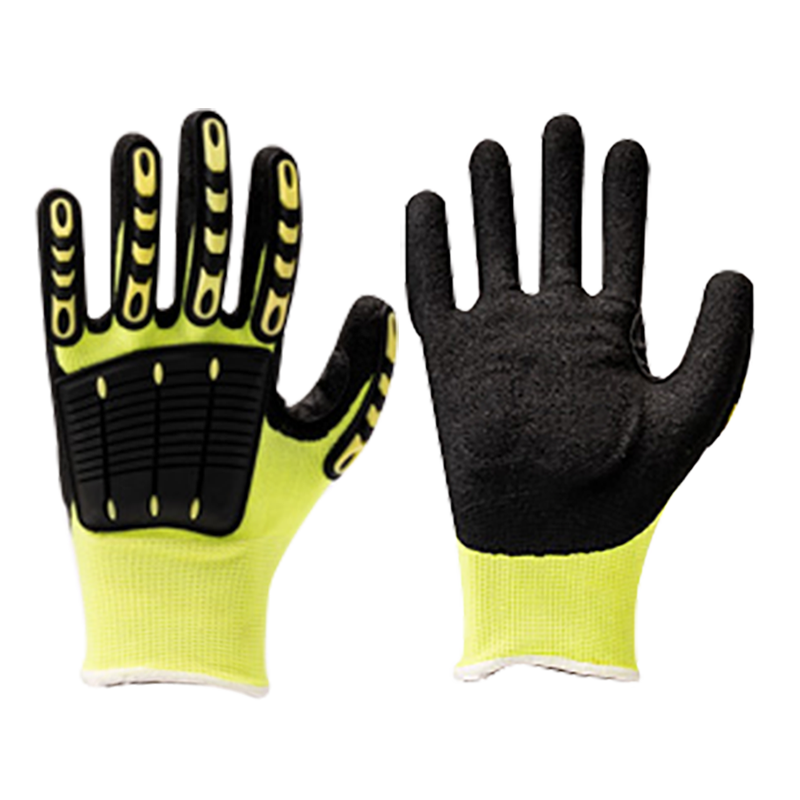
TPR gloves are designed to protect the hands and fingers from impacts and knocks. The TPR material provides a cushioned feel and reduces the risk of injury from repetitive impacts or sudden blows. This is particularly important in tasks like construction, automotive work, and industrial maintenance .
TPR is a flexible material that allows for dexterity and comfort during use. The gloves are designed to move with the hand, allowing for natural movement and reducing fatigue during extended use. This makes TPR gloves suitable for tasks that require precision and fine motor skills .
TPR gloves are known for their durability and resistance to wear and tear. The material is resistant to cuts, tears, and abrasions, making it ideal for tasks that involve handling sharp or rough materials .
Some TPR gloves are designed to be touchscreen-compatible, allowing users to operate devices without removing their gloves. This feature is particularly useful in environments where workers need to interact with digital devices or control systems .
Many TPR gloves feature adjustable wrist closures, allowing users to customize the fit for comfort and security. This ensures that the gloves stay in place during use and prevent dirt and debris from entering the glove .
TPR gloves often include a composite knitted shell that provides additional protection against cuts and slashes. This is especially important in environments where workers are exposed to sharp objects or tools .
| Feature | Description |
| Impact Protection | TPR gloves are designed to protect the hands and fingers from impacts and knocks. The TPR material provides a cushioned feel and reduces the risk of injury from repetitive impacts or sudden blows. This is particularly important in tasks like construction, automotive work, and industrial maintenance. |
| Flexibility and Comfort | TPR is a flexible material that allows for dexterity and comfort during use. The gloves are designed to move with the hand, allowing for natural movement and reducing fatigue during extended use. This makes TPR gloves suitable for tasks that require precision and fine motor skills. |
| Durability and Longevity | TPR gloves are known for their durability and resistance to wear and tear. The material is resistant to cuts, tears, and abrasions, making it ideal for tasks that involve handling sharp or rough materials. |
| Touchscreen Compatibility | Some TPR gloves are designed to be touchscreen-compatible, allowing users to operate devices without removing their gloves. This feature is particularly useful in environments where workers need to interact with digital devices or control systems. |
| Adjustable Fit | Many TPR gloves feature adjustable wrist closures, allowing users to customize the fit for comfort and security. This ensures that the gloves stay in place during use and prevent dirt and debris from entering the glove. |
| Cut and Slash Protection | TPR gloves often include a composite knitted shell that provides additional protection against cuts and slashes. This is especially important in environments where workers are exposed to sharp objects or tools. |
TPR gloves are used in a wide range of industries and applications, including:
| Application | Description |
| Construction and Industrial Work | TPR gloves are commonly used in construction sites, where workers are exposed to impacts, sharp objects, and harsh environments. |
| Automotive and Manufacturing | TPR gloves are used in automotive repair, machine operation, and manufacturing processes where precision and protection are essential. |
| Industrial Maintenance | TPR gloves are ideal for tasks that require dexterity and protection from impacts and vibrations. |
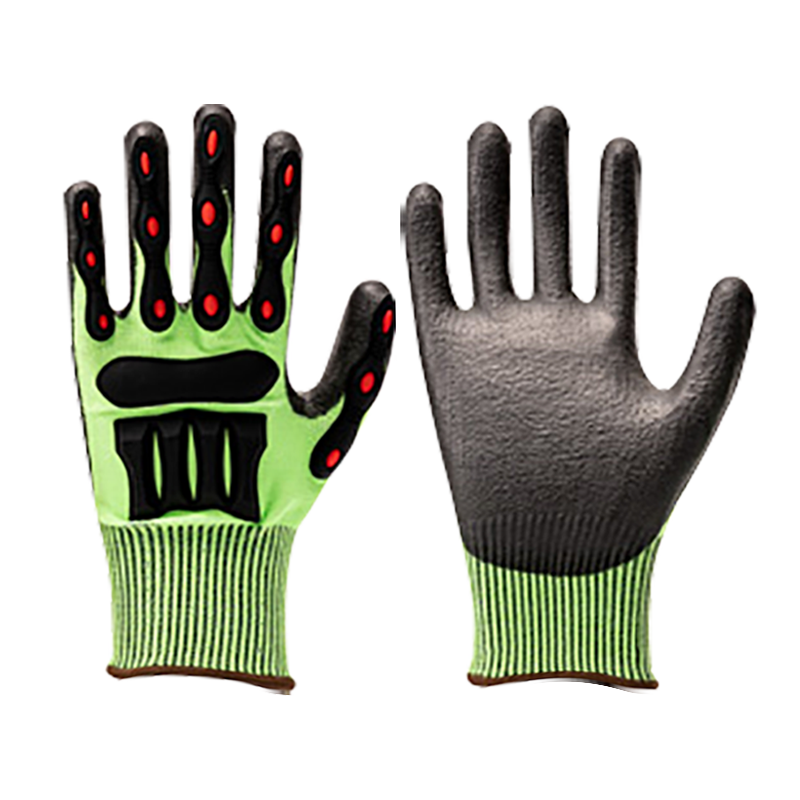
| Component | Description |
| TPR (Thermoplastic Rubber) | The primary material used in TPR gloves. It is a thermoplastic elastomer that provides flexibility, durability, and resistance to impact and wear. |
| Reinforcing Materials | Includes Kevlar, polyethylene (PE), or other high-strength fibers used in high-stress areas (e.g., knuckles, fingers) to enhance durability and cut resistance. |
| Lining and Inner Structure | Materials like polyester, nylon, or high-performance polyethylene (HPPE) used for comfort, breathability, and reduced friction. |
| Coatings and Finishes | Applied to enhance grip (e.g., anti-slip textures) or improve durability. |
| Knuckle and Finger Reinforcement | Reinforced areas (e.g., knuckles, fingers) using stronger materials to protect against impacts and injuries. |
| Cushioning and Padding | Added to the palm and back of the hand for comfort, reduced fatigue, and improved ventilation. |
| Closure and Fit | Secure closures (e.g., Velcro wrist straps) to ensure a snug fit and prevent slippage. |
| Ergonomic Design | Features such as ergonomic contours, reduced seams, and flexible materials for comfort and dexterity. |
| Performance Standards | Tested to meet standards like EN 13594 for impact resistance, ensuring reliability in high-risk environments. |
| Durability and Longevity | Combines TPR material, reinforcing materials, and ergonomic design for long-lasting performance. |
| Comfort and User Experience | Enhanced through breathable materials, anti-slip textures, and ergonomic design for a comfortable and productive work experience. |
| Category | Details |
| Safety Standards | |
| EN388 Standard | TPR gloves meet the EN388 standard for impact resistance, abrasion resistance, cut resistance, and tear resistance. |
| ANSI/ISEA Standards | The gloves also meet ANSI/ISEA standards for impact resistance and cut resistance. |
| GOST R 53264 | Some manufacturers adhere to GOST R 53264 standards for quality and safety. |
| Performance Metrics | |
| Impact Resistance | Levels of impact resistance are typically measured in kN (kilonewtons) and are categorized into levels (e.g., Level 1, Level 2, Level 3). |
| Cut Resistance | Cut resistance is often measured using the EN388 standard, with values ranging from A1 to A3. |
| Testing and Certification | |
| Third-Party Testing | Many manufacturers conduct third-party testing to ensure their products meet industry standards. |
| Quality Control | Manufacturers often have strict quality control processes to ensure product consistency and reliability. |
When purchasing TPR gloves, buyers should consider the following factors:
The type of task being performed will determine the level of protection needed. For example, tasks involving impacts or sharp objects may require gloves with enhanced impact protection and cut resistance .
The fit and comfort of the gloves are important for extended use. Adjustable wrist closures and flexible materials can enhance comfort and reduce fatigue .
The durability of the gloves is important for long-term use. TPR gloves are known for their durability and resistance to wear and tear .
Features such as touchscreen compatibility, cut resistance, and adjustable fit can enhance the functionality of the gloves .
The quality of the gloves is important for safety and performance. Reputable brands and manufacturers offer high-quality TPR gloves that meet industry standards .
| Selection Criteria | Description |
| Intended Use | Determine the primary application (e.g., industrial, construction, mechanical work). |
| Impact Resistance | Look for gloves with reinforced knuckles and fingers for protection against impacts. |
| Material Quality | TPR (Thermoplastic Rubber) is a key material; check for durability and comfort. |
| Cut and Abrasion Resistance | Consider gloves with reinforcing materials like Kevlar or high-strength fibers. |
| Comfort and Fit | Ensure the gloves offer ergonomic design, adjustable closures, and breathability. |
| Grip and Performance | Look for gloves with anti-slip textures and good grip for handling small or oily components. |
| Certification and Standards | Check for compliance with standards like EN 13594 for impact resistance. |
| Cost and Durability | Balance cost with durability; consider long-term performance and value. |
| User Feedback | Refer to user reviews and testimonials for real-world performance. |
When purchasing TPR gloves, buyers should consider the following:
It is important to choose a reputable supplier that offers high-quality TPR gloves. Reputable suppliers often have partnerships with material suppliers and adhere to industry standards .
The ordering process typically involves providing detailed requirements and specifications. Buyers can contact suppliers via email or other communication channels to discuss their needs and receive quotes .
Delivery options may vary depending on the supplier and the buyer's location. Buyers should consider factors such as delivery time, shipping methods, and payment terms .
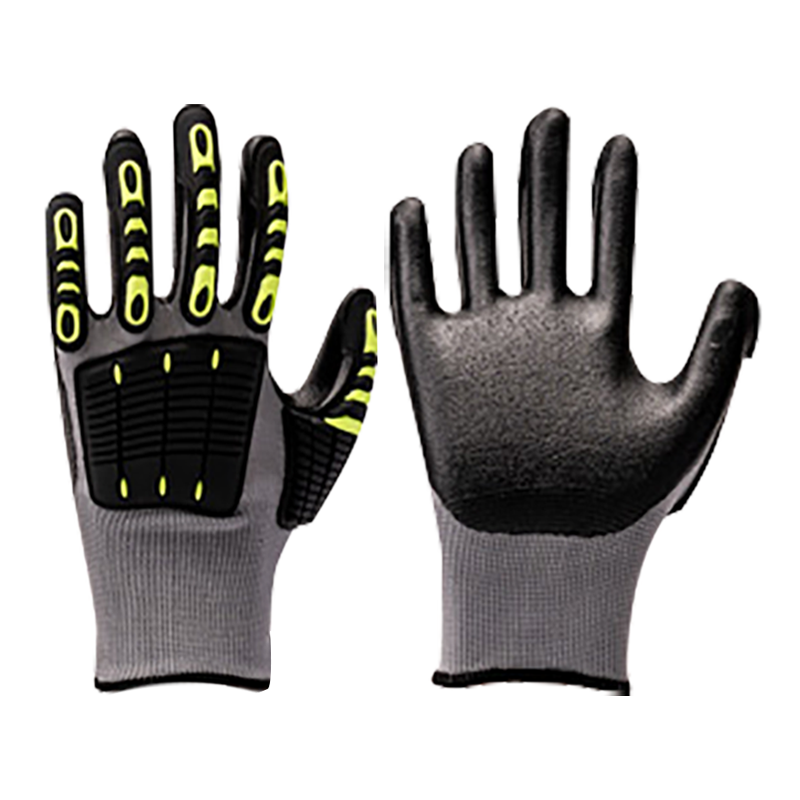
| Feature | TPR Gloves | Neoprene Gloves | Nitrile Gloves | Leather Gloves |
| Material | Thermoplastic Rubber | Synthetic Rubber | Synthetic Rubber | Natural Leather |
| Flexibility | High | Medium | Medium | Low |
| Durability | High | Medium | High | Medium |
| Impact Protection | High | Medium | Medium | Low |
| Cut Resistance | Medium | Low | High | Medium |
| Cost | Medium | Low | High | Medium |
| Common Uses | Industrial, Construction, Manual Labor | Diving, Swimming, Waterproofing | Medical, Chemical Handling | Automotive, Leather Goods |
TPR gloves can sometimes lead to overheating and sweat buildup, especially during extended use. This can cause discomfort and reduce dexterity.
Solution: Look for gloves with breathable materials or ventilation features. Some TPR gloves are designed with perforated materials to improve airflow.
While TPR gloves are flexible, they may still limit fine motor skills in some tasks.
Solution: Choose gloves with a thinner design or those specifically designed for precision tasks. Some TPR gloves are designed for touchscreen use, which can enhance dexterity.
Over time, TPR material can degrade due to exposure to chemicals, oils, or UV light.
Solution: Choose gloves with a protective coating or those designed for specific environments. Regular inspection and replacement of worn gloves are recommended.
| Challenge | Description | Solution |
| Heat and Sweat Buildup | TPR gloves can retain heat and sweat, leading to discomfort and reduced dexterity. | Use gloves with ventilation features or perforated designs to improve airflow . |
| Limited Dexterity | TPR gloves may limit fine motor skills in some tasks. | Choose gloves with thinner designs or those specifically designed for precision tasks . |
| Material Degradation | TPR material can degrade due to exposure to chemicals, oils, or UV light. | Choose gloves with protective coatings or those designed for specific environments. Regular inspection and replacement of worn gloves are recommended . |
| Difficulty in Donning | Thick gloves can make it challenging to put on other PPE (e.g., goggles, respirators). | Don gloves before putting on other PPE. Consider using thinner glove liners for tasks requiring dexterity . |
| Skin Irritation | Wearing liquid-tight gloves can lead to moisture and heat retention, causing skin irritation. | Use wool underwearing gloves or semipermeable membrane gloves to reduce skin damage . |
| Lack of Standardization | TPR is a generic term with varying performance attributes, leading to confusion in product selection. | Refer to industry standards (e.g., ANSI/ISEA Level 3) and objective performance standards . |
| Aspect | Details |
| Cleaning | Regularly clean the gloves to remove dirt, sweat, and grime. Use a mild soap and water solution, and allow them to air dry completely. Avoid using harsh chemicals or bleach . |
| Storage | Store the gloves in a cool, dry place, away from direct sunlight and heat. Proper storage helps prevent degradation and extends the life of the gloves . |
| Inspection | Regularly inspect the gloves for signs of wear, tear, or damage. Replace damaged gloves promptly to maintain protection . |
| Handling | Avoid contact with skin, eyes, and clothing. Keep TPR away from any sources of heat or open flames. Do not inhale the fumes from TPR . |
| Disposal | Dispose of TPR properly in accordance with local regulations. Clean up spilled TPR immediately, as it may cause slipping hazards . |
| Care | Follow the manufacturer's instructions for cleaning and disinfecting gloves, especially for reusable gloves . |
| Replacement | Pay attention to any signs of damage or wear, and replace the gloves as needed to ensure optimal protection and performance . |
| Aspect | Details |
| Storage Environment | Store the gloves in a cool, dry place, away from direct sunlight and heat. Proper storage helps prevent degradation and extends the life of the gloves . |
| Avoid Direct Sunlight | Direct sunlight can cause the gloves to degrade and lose their protective properties. Keep them in a shaded area . |
| Humidity Control | Avoid storing the gloves in high-humidity environments, as moisture can lead to mold and deterioration. Ensure good ventilation if storing in a container . |
| Temperature Control | Extreme temperatures can affect the integrity of the gloves. Store them at room temperature to maintain their performance . |
| Avoid Chemicals | Keep the gloves away from harsh chemicals, solvents, and cleaning agents, as these can damage the material . |
| Regular Inspection | Periodically check the gloves for signs of wear, tear, or damage. Replace damaged gloves promptly to ensure optimal protection . |
| Proper Handling | Handle the gloves with care to avoid unnecessary stress or damage. Avoid bending or stretching beyond their intended use . |
| Labeling and Organization | Keep track of the gloves using a stock system to ensure proper inventory management and timely replacement . |
Companies that produce TPR gloves often have global supply chains, sourcing materials from international suppliers. This ensures access to high-quality materials and competitive pricing. Companies like those mentioned in the evidence work with suppliers from the USA, Europe, South America, Japan, Korea, and Taiwan .
Buyers interested in TPR gloves can typically place orders by providing detailed requirements, such as quantity, specifications, and delivery terms. Minimum order quantities (MOQ) may vary, and delivery options such as EXW, FOB, and CIF are commonly offered .
TPR gloves are often produced to meet industry standards, such as GOST R 53264, which ensures compliance with safety and quality standards .
| Selection Criteria | Description |
| Task Requirements | Consider the type of task (e.g., construction, manual labor, precision work) and the level of protection needed. |
| Material & Durability | TPR gloves are known for their durability, resistance to cuts, tears, and abrasions . |
| Comfort & Fit | Look for gloves with adjustable wrist closures and flexible materials for comfort during extended use . |
| Special Features | Consider features like touchscreen compatibility, cut resistance, and ventilation for specific tasks . |
| Standards & Compliance | Check for compliance with safety standards such as EN 388 (EN388) or ANSI/ISEA standards . |
| Brand & Quality | Choose reputable brands with quality assurance and certifications . |
| Cost & Value | Balance cost with quality, durability, and features . |
| Environmental Considerations | Consider sustainability and recyclability of materials . |
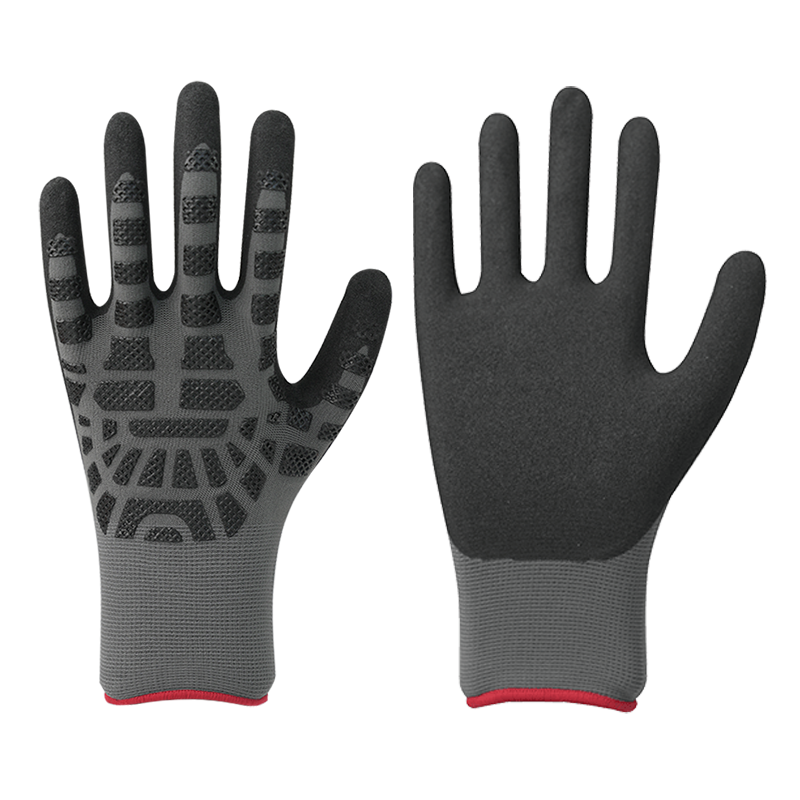
When searching for TPR gloves, buyers often use terms such as:
TPR gloves are available from a variety of suppliers, including:
TPR is a synthetic material, and its production and disposal can have environmental implications. However, TPR is recyclable in some cases, and manufacturers are increasingly focusing on sustainable practices.
Solution: Look for brands that prioritize sustainability and use recycled materials where possible.
TPR gloves should meet safety standards such as EN 388 (European standard for hand protection) or ASTM F1755 (American standard for hand protection).
Solution: Choose gloves that are certified by recognized safety organizations and meet industry standards.
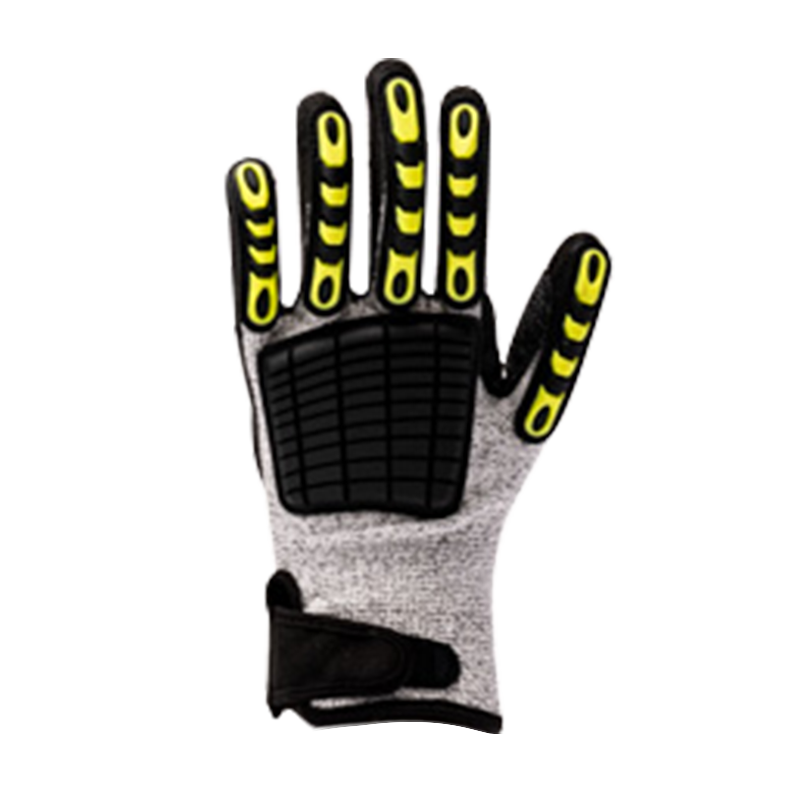
TPR gloves are a versatile and essential tool for hand protection in a wide range of industries. Their combination of durability, comfort, and protection makes them a popular choice for workers in industrial, construction, and automotive fields. By understanding the features, applications, and market dynamics of TPR gloves, buyers can make informed decisions and select the right gloves for their needs.
Come and meet Nitrile Coated Gloves!
All You Need to Know About Cut-Resistant Gloves: A Comprehensive Guide
Your email address will not be published. Required fields are marked *
You can contact to me using this form.
